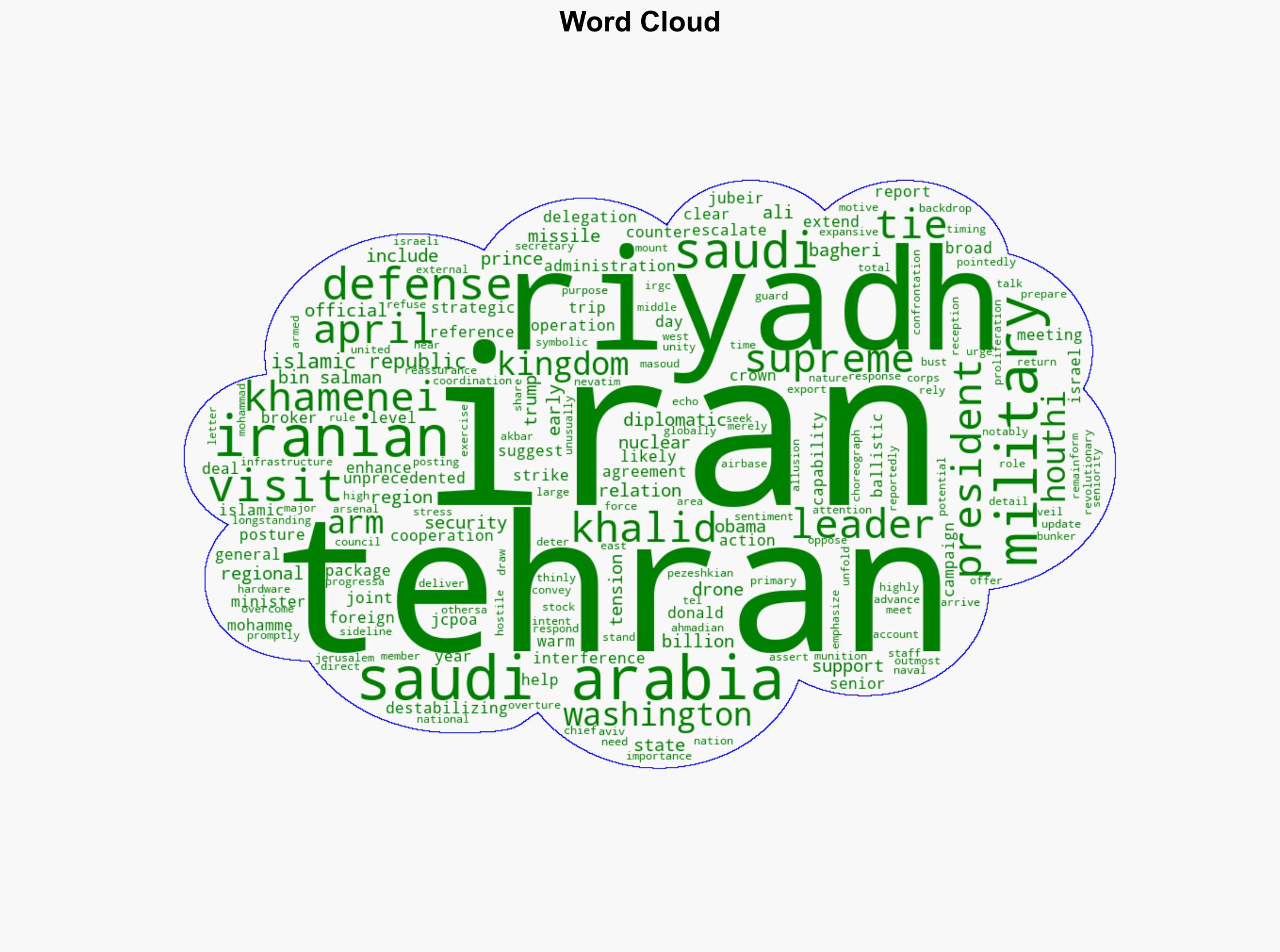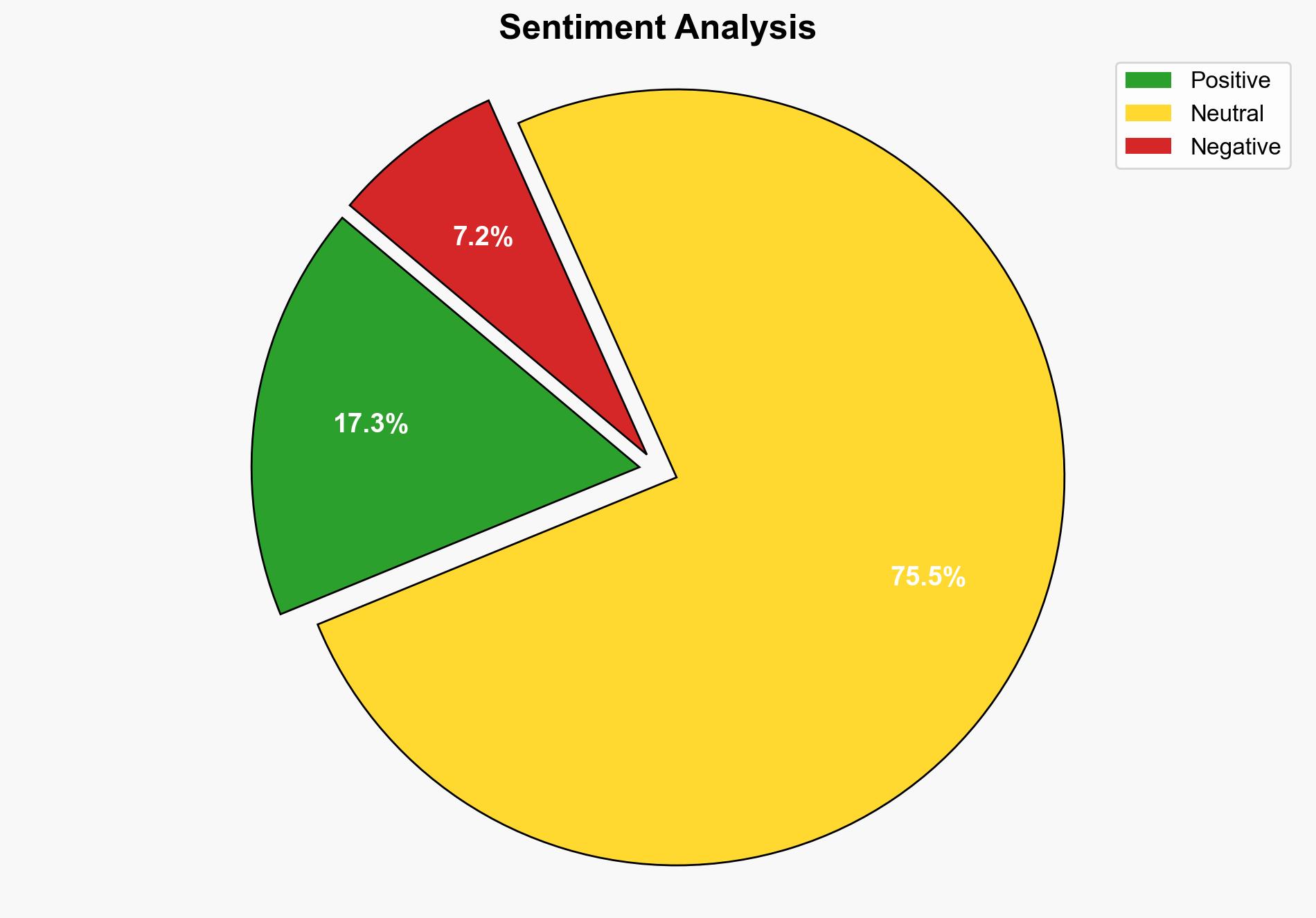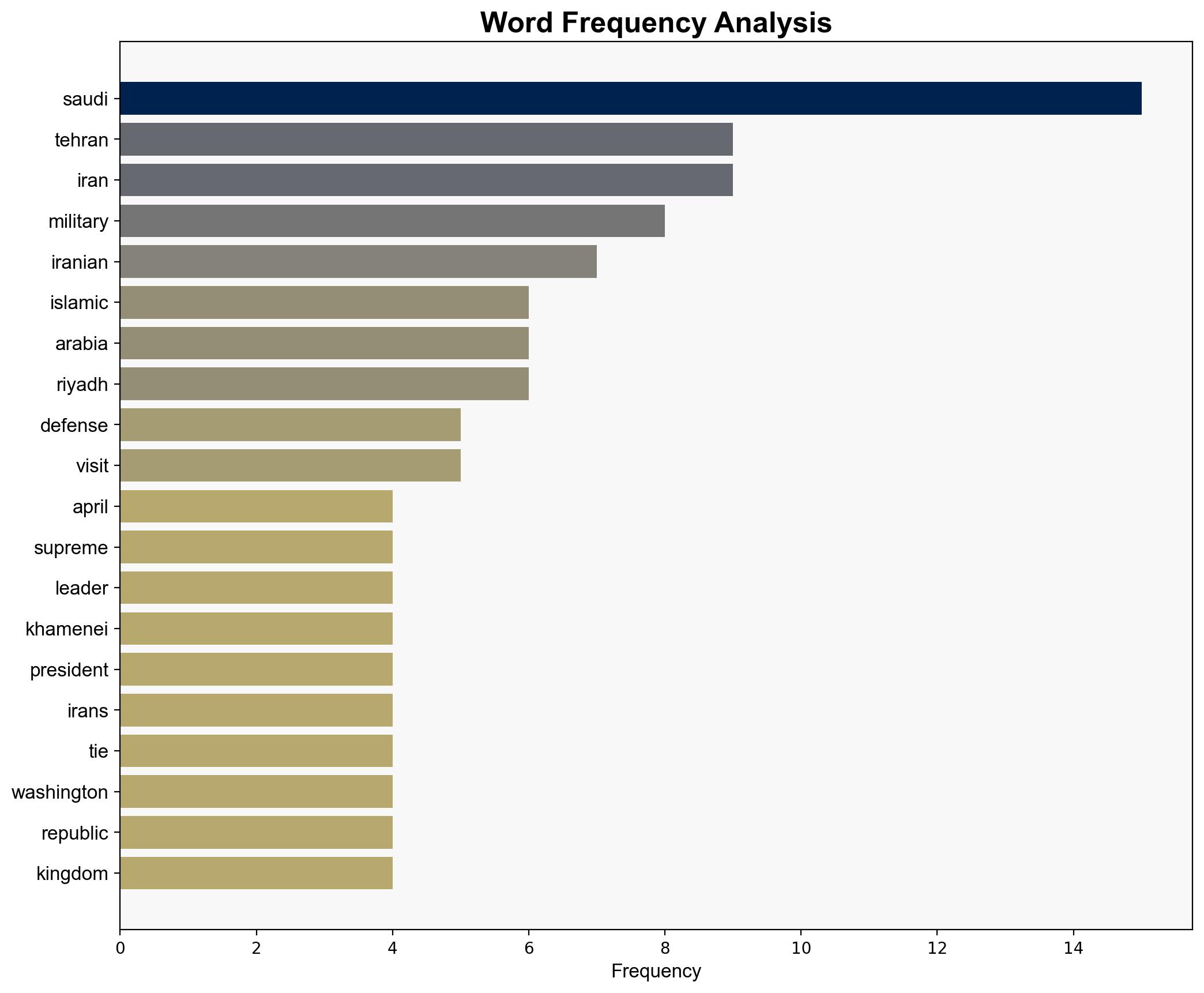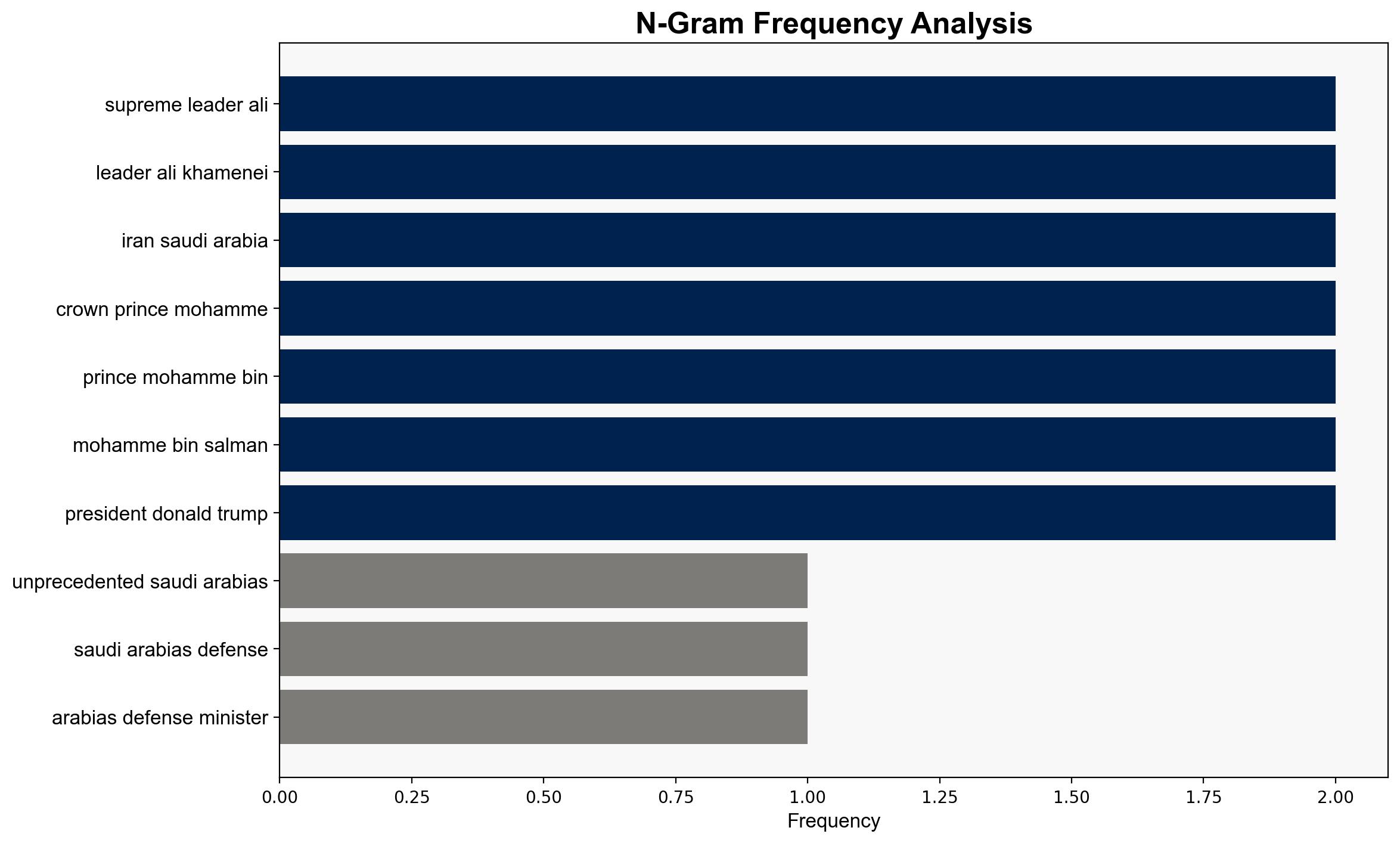Analysis A decade of Saudi-Iranian relations from rivalry to re-engagement – Longwarjournal.org
Published on: 2025-04-19
Intelligence Report: Analysis A decade of Saudi-Iranian relations from rivalry to re-engagement – Longwarjournal.org
1. BLUF (Bottom Line Up Front)
The recent diplomatic engagements between Saudi Arabia and Iran signify a strategic shift from longstanding rivalry to cautious re-engagement. This development is underscored by high-level meetings and a commitment to restore diplomatic ties, potentially altering the regional power dynamics. Key recommendations include monitoring the implementation of bilateral agreements and preparing for potential shifts in regional alliances.
2. Detailed Analysis
The following structured analytic techniques have been applied:
SWOT Analysis
Strengths: Renewed diplomatic channels may stabilize regional tensions and foster economic cooperation.
Weaknesses: Historical distrust and external influences could undermine progress.
Opportunities: Potential for enhanced security collaboration and economic partnerships.
Threats: External actors, such as the U.S. and Israel, may perceive this rapprochement as a threat, potentially escalating tensions.
Cross-Impact Matrix
The Saudi-Iranian rapprochement could influence neighboring regions by reducing proxy conflicts, particularly in Yemen and Syria. However, it may also prompt realignments among Gulf Cooperation Council (GCC) states and impact U.S. strategic interests in the Middle East.
Scenario Generation
Scenario 1: Successful diplomatic engagement leads to a stable regional security framework, reducing proxy conflicts.
Scenario 2: Diplomatic efforts falter, leading to renewed tensions and increased external interference.
Scenario 3: Partial success with limited cooperation, maintaining a fragile peace.
3. Implications and Strategic Risks
The warming relations between Saudi Arabia and Iran could reshape regional alliances, impacting U.S. influence and security dynamics. The potential for increased Iranian influence in the Gulf region poses a strategic risk to U.S. and Israeli interests. Additionally, the re-engagement may alter the balance of power in ongoing conflicts, particularly in Yemen and Syria.
4. Recommendations and Outlook
- Monitor the implementation of the Saudi-Iranian agreements to assess their impact on regional stability.
- Engage with regional partners to ensure alignment of strategic interests and mitigate potential conflicts.
- Prepare for scenario-based outcomes, particularly those involving shifts in U.S. and Israeli strategic postures.
- Encourage dialogue among GCC states to maintain a unified approach to regional security challenges.
5. Key Individuals and Entities
– Khalid bin Salman
– Ali Khamenei
– Masoud Pezeshkian
– Mohammad Bagheri
– Ali Akbar Ahmadian
– Mohammed bin Salman
– Adel al-Jubeir




